One of the precocious talents of his generation, Mark Gertler made advances in painting and forged connections among the Bloomsbury set – though Virginia Woolf was never entirely certain about him.
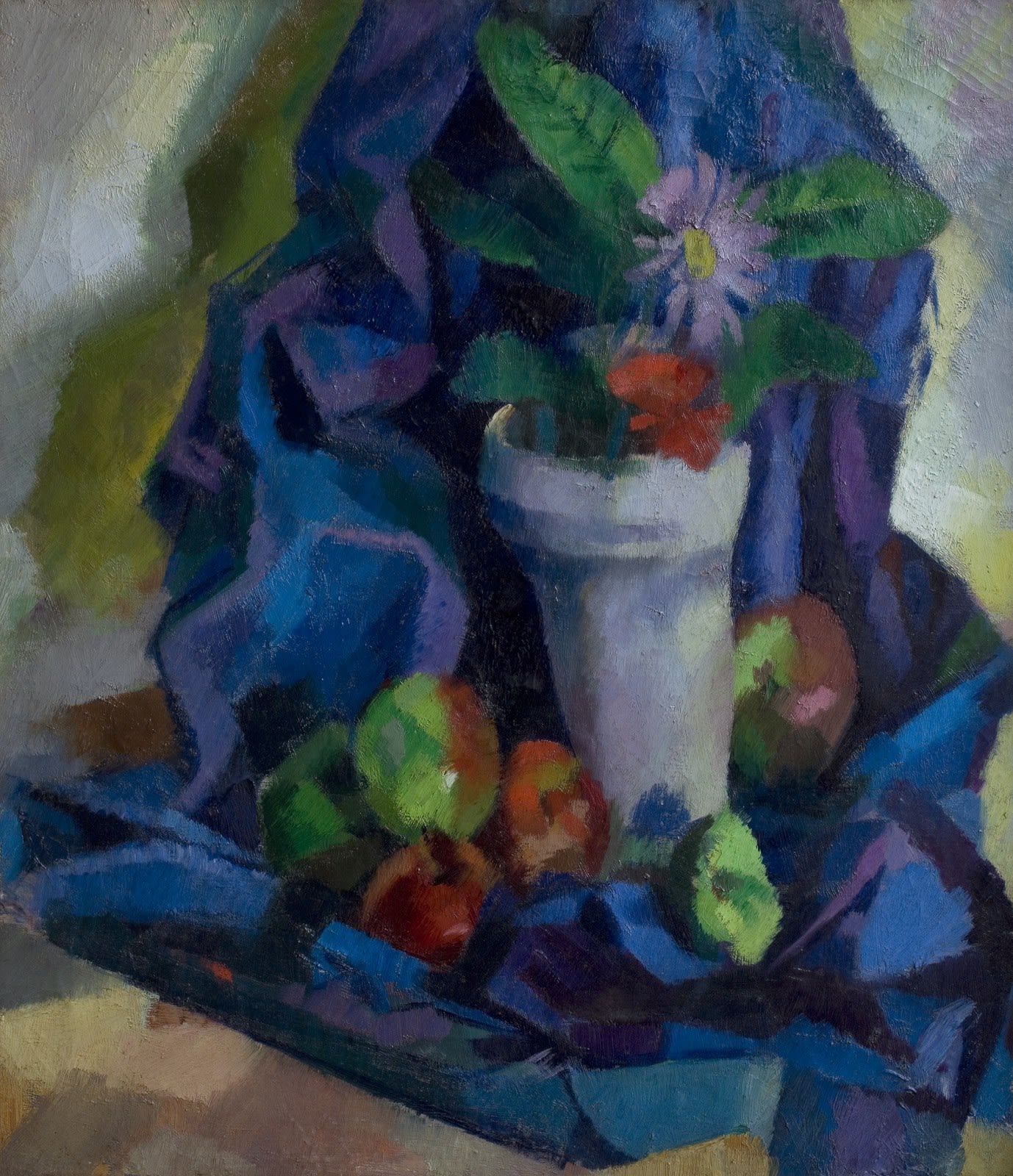
In November 1917, Still Life, Flowers was included in the seventh London Group exhibition at the Mansard Gallery, Tottenham Court Road. The painting may have been in Virginia Woolf’s mind when she later wrote to her sister Vanessa about visiting the exhibition. ‘I was a good deal impressed by Gertler, much more at this Show than at the other.’ (The ‘other’ was perhaps the preceding London Group exhibition held at the Mansard Gallery earlier in the year.) The Mansard Gallery was located on the fourth floor of Heal’s, the furniture shop, and since Ambrose Heal was close to the Bloomsbury set the gallery became an occasional forum for Bloomsbury initiatives, including an exhibition of the Friday Club in 1921.
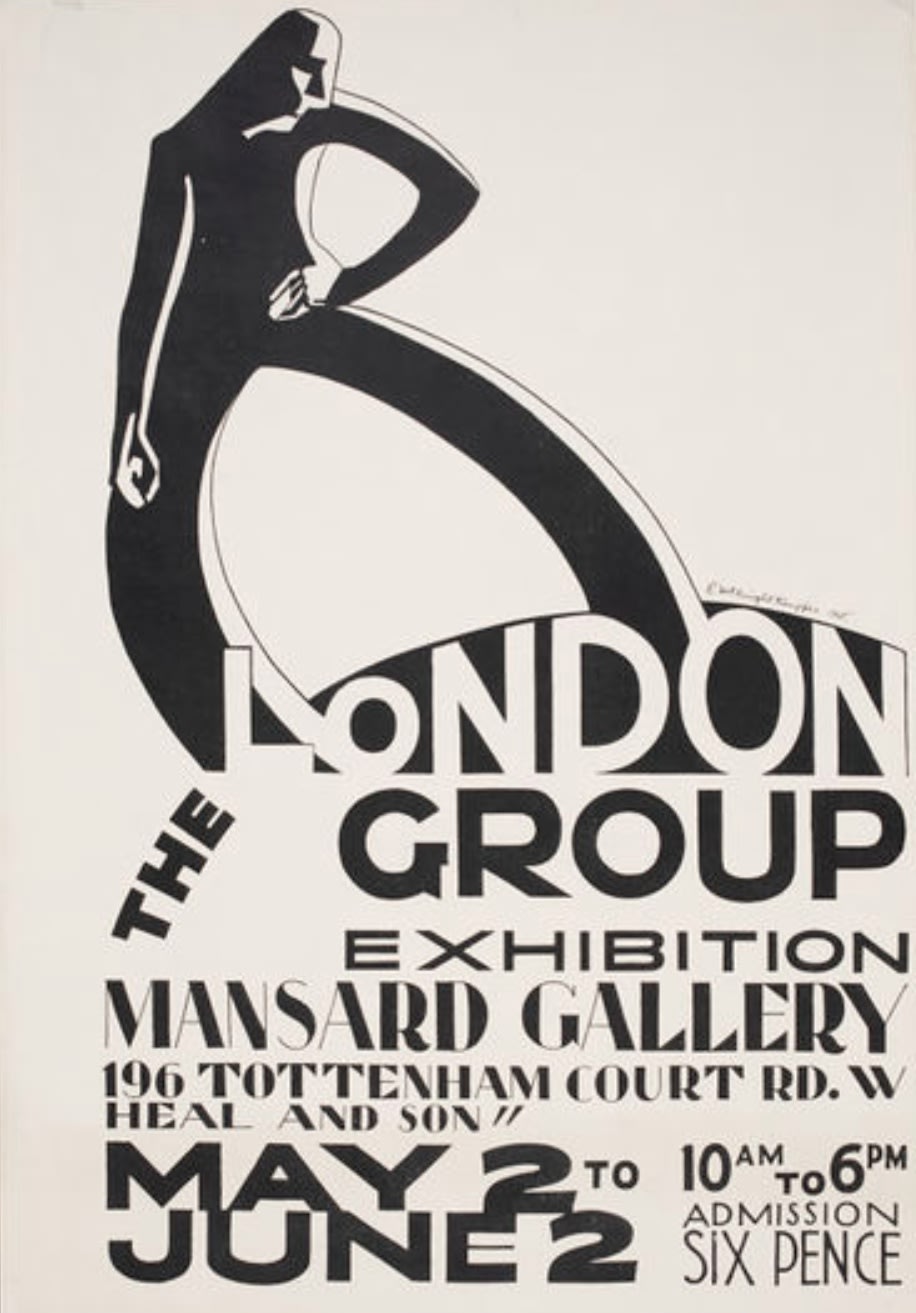
Woolf met Gertler in November 1916 and, within a few years, they were sufficiently well acquainted that Gertler invited himself to dine with her and Leonard one summer night in 1918. (‘God knows why’, she commented in a letter to Vanessa.) The evening was not entirely successful. ‘We talked mostly about his views of art; I didn’t much like him, but I suppose he is what they called ‘powerful’.’ Woolf could be changeable though and within three months she had invited Gertler to stay at her Sussex retreat, Asheham House, for a weekend visit. (She may have liked him, but only in small doses it seems – writing to Vanessa who lived nearby at Charleston, ‘I thought perhaps you’d ask him over to you on Sunday.’) The visit was tainted by tittle-tattle afterwards. Gertler allegedly spread a rumour that Woolf despised her sister Vanessa’s rival in love, Mary Hutchinson, who was having an extended affair with Vanessa’s husband Clive Bell. In the end, Woolf resolved to ‘steer clear of Gertler […] and all the rest of that set’.
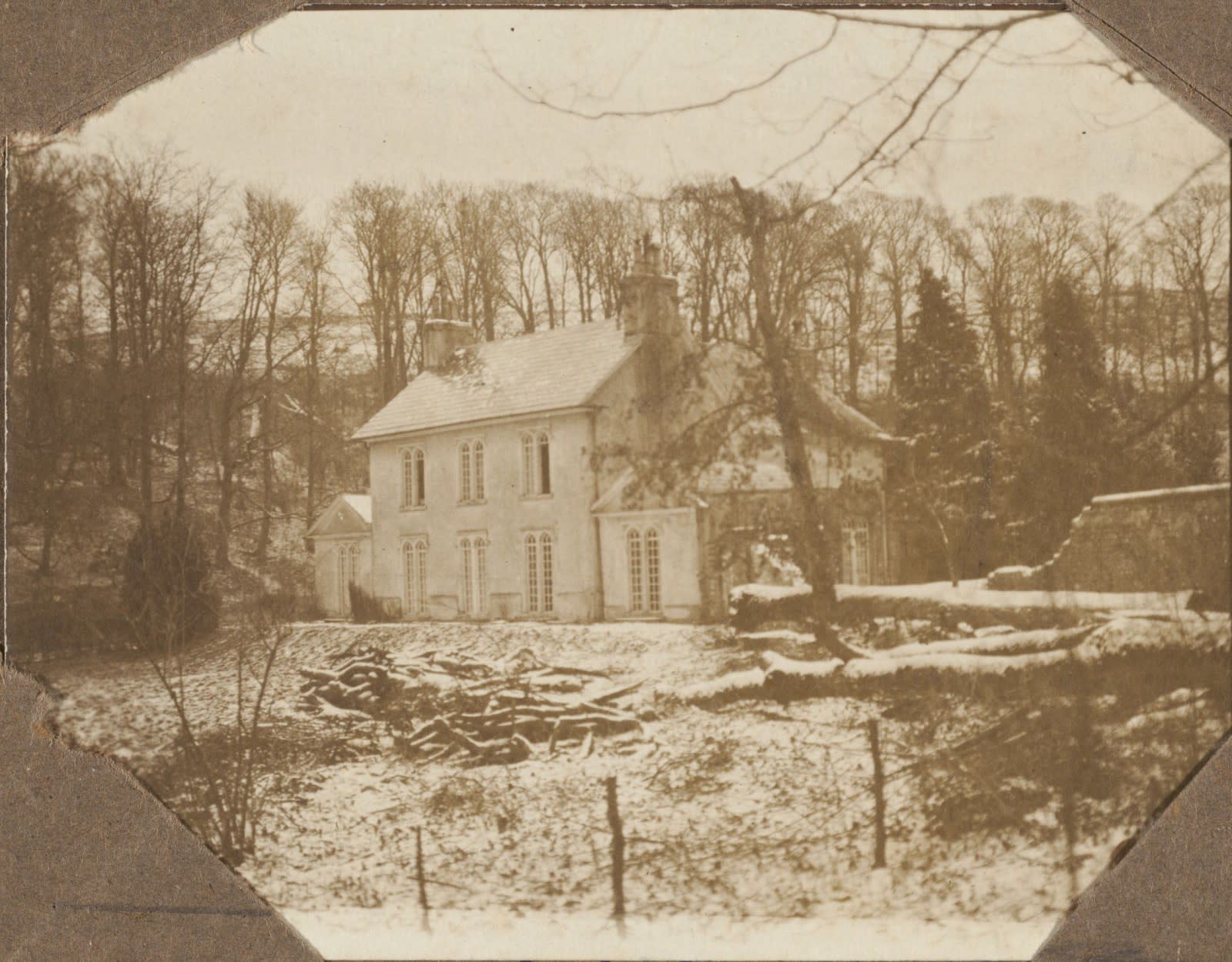
Whatever Woolf’s personal attitude to Gertler, there is no doubt of her appreciation of his work. On a visit to the November exhibition of the London Group in 1918, she reiterated to Vanessa that ‘Gertler certainly dominates his wall; and rather impresses me’. Even as he maintained a lively calendar of socialising, with the odd visit to Woolf and Ottoline Morrell at Garsington, Gertler was pursuing a serious artistic project, and the lodestar of this project in 1917 was Paul Cézanne.
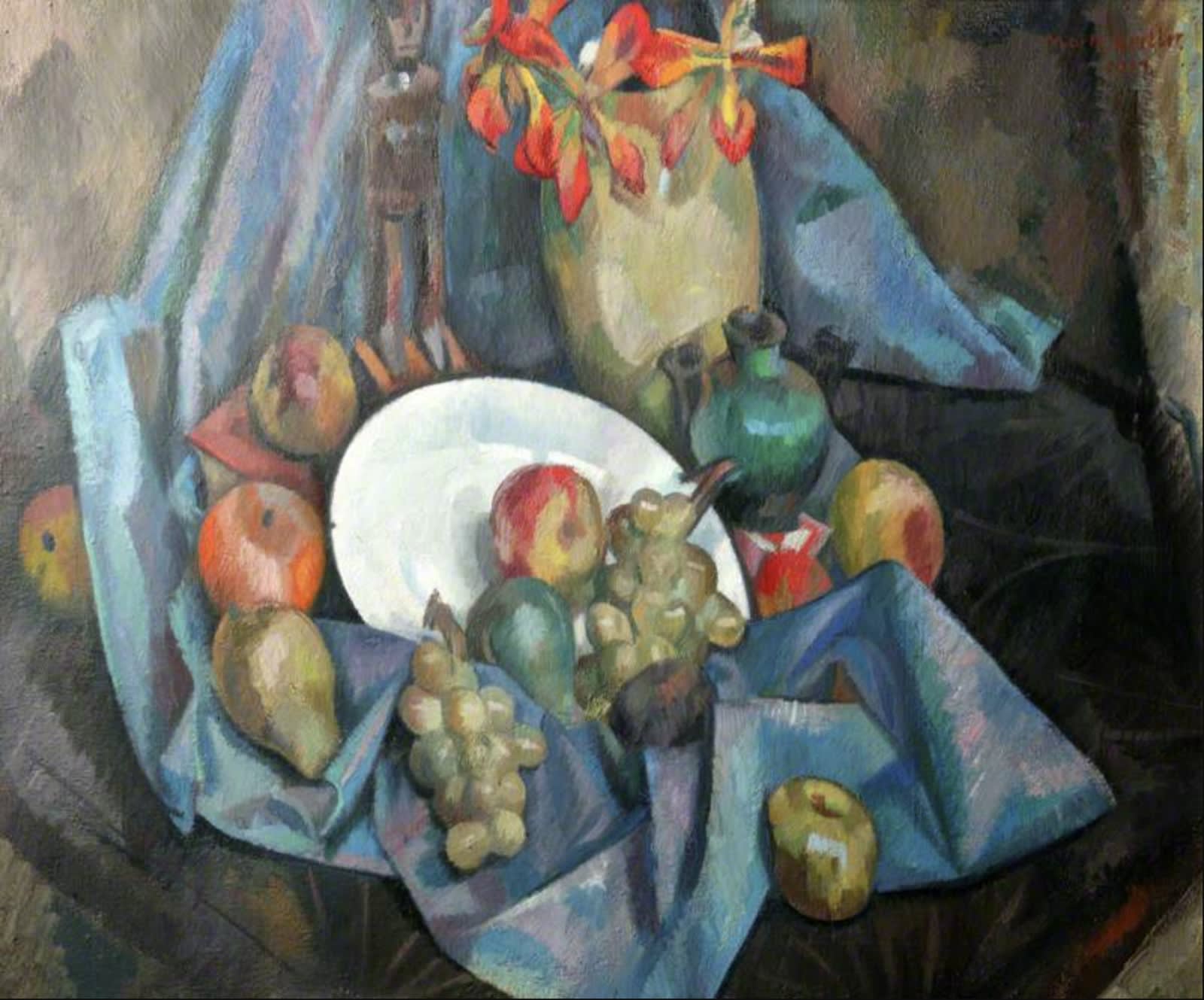
Gertler was warming to the still-life theme in 1917. Aside from Still Life, Flowers, another simply named ‘Still Life’ from that year echoes Cézanne’s compositional habits, with fruit scattered over the folds of a draped cloth. Roger Fry made contact with Gertler and began promoting his work at this time, as Gertler’s biographer John Woodeson wrote.
Fry’s understanding of art was profound, and his knowledge of the French Post-Impressionist painters far surpassed that of any other English critic. In his company Mark experienced again the shock of his first contact, several years before, with modern French art. This time his understanding was greater and the shock correspondingly more intense.
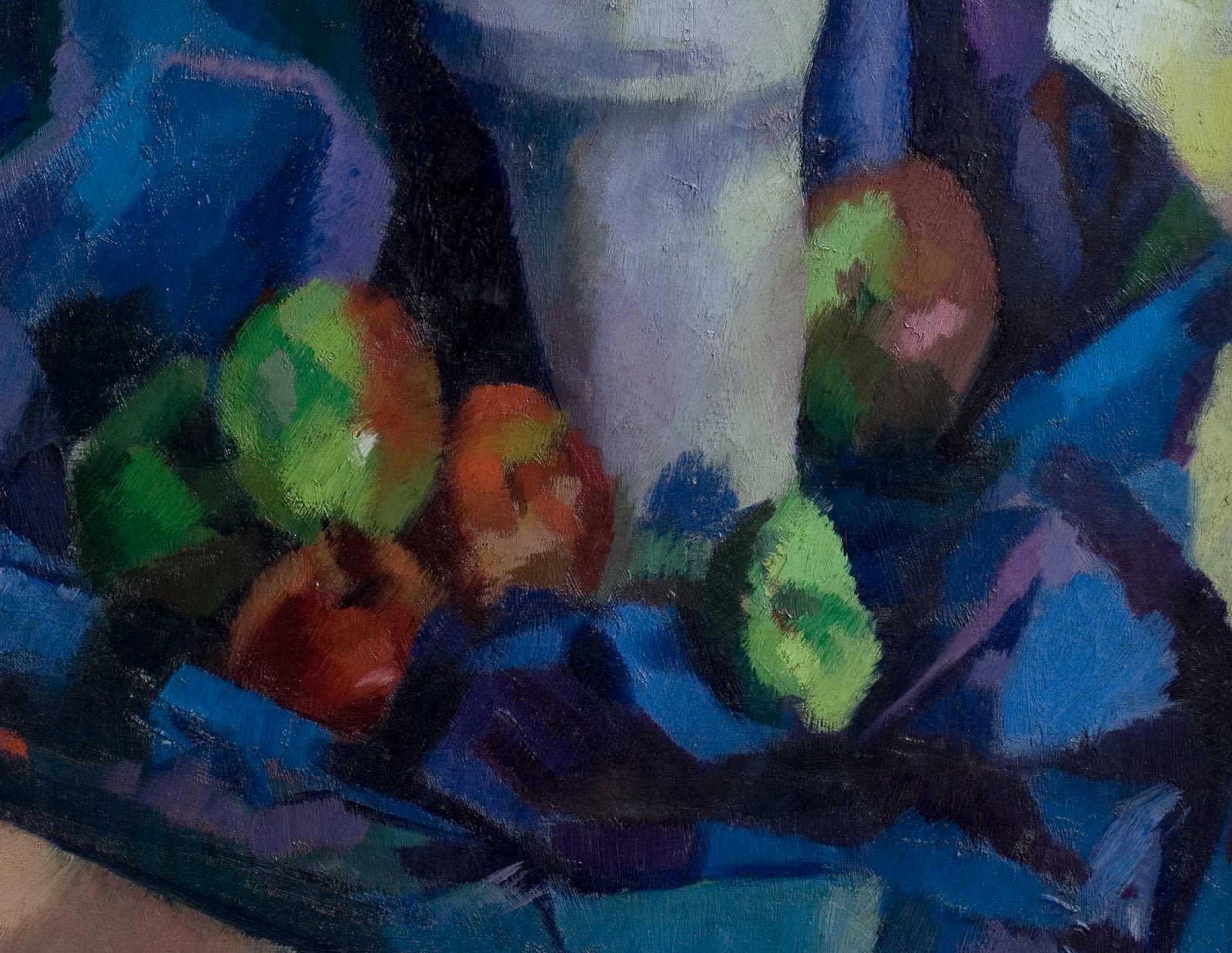
The use of bright, unmixed colour in jarring combinations was an especially important lesson. Still Life, Flowers is knowingly untasteful, offending against the prevailing system of broken-brush tonal modelling which prevailed in the less-than-avant-garde painting of the New English Art Club, for instance. The neighbouring areas of pastel green and midnight purple, the studied evenness of the paint surface (eschewing the trend for impressionistic broken brushwork), and the flickering incompleteness of the apples placed this work at the forefront of advanced painting in England.

